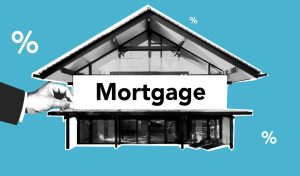The Transformative Power of Sustainable Architecture
The world is facing an ever-growing environmental crisis, and architects have a vital role to play in addressing it. Sustainable architecture, also known as green architecture, is a design approach that prioritizes the use of environmentally friendly materials and energy-efficient processes. It is a transformative approach that not only benefits the planet but also has a positive impact on people’s lives. In this article, we will delve into the transformative power of sustainable architecture and how it is shaping the future of our built environment.
The Emergence of Sustainable Architecture
The concept of sustainable architecture emerged in the 1960s as a response to the alarming rate of environmental degradation caused by rapid urbanization and industrialization. Designers started to think beyond the aesthetics of buildings and instead focused on creating structures that minimize their carbon footprint and promote environmental stewardship.
Over the years, sustainable architecture has evolved and expanded to encompass a wide range of environmental, social, and economic considerations. It has become more than just a design philosophy; it is now a movement that is redefining the way we live, work, and interact with our surroundings.
Environmental Benefits of Sustainable Architecture
Sustainable architecture has a multitude of environmental benefits. By incorporating innovative design strategies and technologies, buildings can reduce their energy consumption, minimize waste, and utilize renewable resources. This not only reduces greenhouse gas emissions but also mitigates the negative impact of buildings on the environment.
For instance, passive solar design techniques that rely on natural light and ventilation not only reduce energy use but also improve indoor air quality. The use of sustainable and recycled materials in construction also reduces the depletion of natural resources and minimizes waste generation.
Social Impact of Sustainable Architecture
Sustainable architecture goes beyond reducing the negative impact of buildings on the environment. It also has a powerful social impact. By prioritizing human health and well-being, sustainable buildings can improve the quality of life of their occupants.
Green buildings are designed to be healthy, comfortable, and safe places to live, work, and learn. They use non-toxic materials that improve indoor air quality and minimize health risks. They also provide access to natural light, green spaces, and other amenities that promote physical and mental well-being.
Economic Benefits of Sustainable Architecture
Some critics argue that sustainable architecture is costly and not economically feasible. However, research has shown that the long-term benefits of green buildings far outweigh their initial costs. By reducing energy and water consumption, sustainable buildings save money on utility bills, making them more affordable in the long run.
Sustainable architecture also has a positive impact on the local economy. The use of locally sourced materials and labor stimulates economic growth and creates job opportunities. Moreover, green buildings have a higher market value and are more attractive to potential buyers, making them a sound investment for developers.
The Future of Sustainable Architecture
The concept of sustainable architecture is being embraced by governments, businesses, and individuals around the world. It is paving the way for a more sustainable future where buildings not only coexist with nature but also contribute to its preservation.
Advances in technology, such as 3D printing and building information modeling, are revolutionizing the way we design and construct buildings. These tools, combined with sustainable design strategies, are enabling architects to create high-performing, energy-efficient, and visually stunning structures.
The transformation towards a sustainable built environment is also reflected in the increasing number of green building certifications, such as LEED and BREEAM. These certifications provide a framework for measuring the environmental, social, and economic impact of buildings and encourage the adoption of sustainable practices in the construction industry.
In Conclusion
Sustainable architecture has the power to transform our built environment and pave the way for a sustainable future. By promoting environmental stewardship, improving human health and well-being, and stimulating economic growth, it is redefining the way we design and construct buildings. As architects, it is our responsibility to embrace sustainable design principles and create buildings that not only benefit the planet but also enhance the lives of their occupants.










